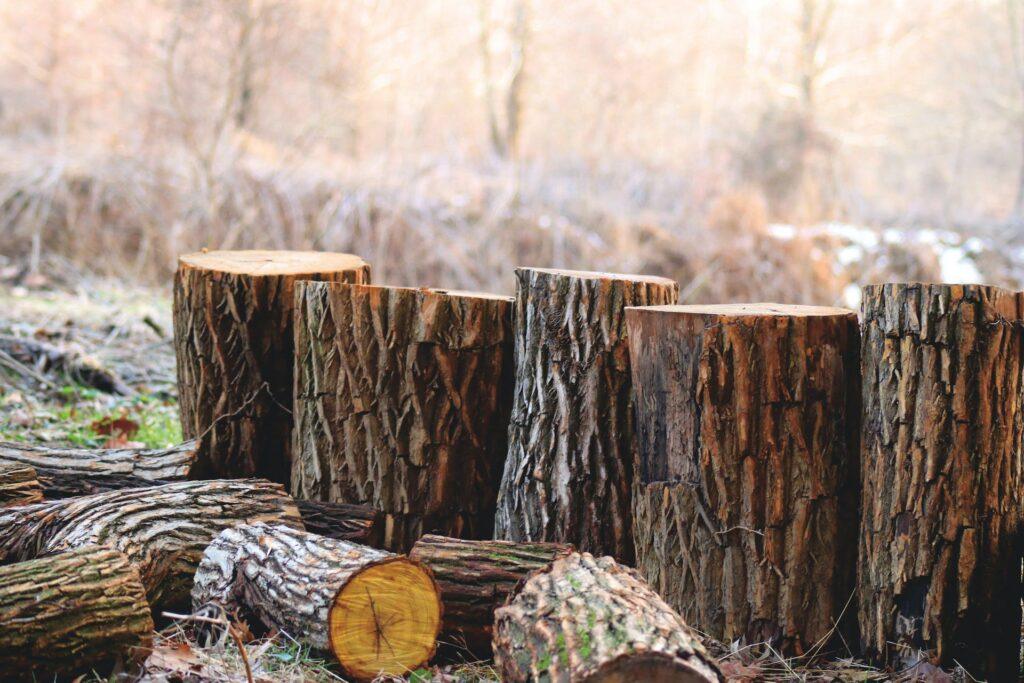We have spoken at length many times about wood, the reasons for seasoning wood, how to season wood, the best wood to burn on your stove, not to mention the problems if you burn unseasoned wood or the wrong wood – or the wrong fuel, for that matter! No matter how efficient your stove may be, if you’re burning the wrong stuff, you will be doing it a huge disservice, not to mention the environmental problems you will cause.

What actually is wood?
Wood is a natural composite material primarily made of organic compounds. It consists of a complex mixture of cellulose, hemicellulose, lignin, and small amounts of extractives and inorganic minerals. Each of these components plays a vital role in defining the physical, chemical, and mechanical properties of wood. An organic compound is a chemical compound that contains carbon atoms bonded to hydrogen atoms, often along with other elements like oxygen, nitrogen, sulfur, phosphorus, and halogens. Organic compounds are the primary constituents of all living organisms and form the basis of organic chemistry.
We hope you are still following..
Here are the main components of wood
Cellulose (40–50%)
Cellulose is a linear polymer made up of glucose units linked by glycosidic bonds. These molecules form strong hydrogen bonds with each other, giving wood its tensile strength. It provides structural integrity and forms the microfibrils in the wood cell walls.
Hemicellulose (20–30%)
Hemicellulose is a heteropolysaccharide composed of xylose, mannose, glucose, galactose, and arabinose). Unlike cellulose, hemicellulose has a branched structure and lower molecular weight.
It acts as a matrix around cellulose microfibrils. It adds flexibility to the wood structure. It absorbs moisture and swells easily, influencing wood’s hygroscopic properties.
Lignin (20–30%)
Lignin is composed of phenylpropanoid units (p-coumaryl, coniferyl, and sinapyl alcohols). Lignin is a highly branched, three-dimensional polymer of aromatic alcohols and provides rigidity and compressive strength. It acts as a natural adhesive, binding cellulose and hemicellulose together and offers resistance to microbial degradation and contributes to the wood’s durability.
There are minor components of wood, too:
Extractives – Include oils, resins, tannins, waxes, alkaloids, and phenolic compounds. These contribute to the colour, odour, and natural resistance to decay and insects and affect the wood’s chemical reactivity and suitability for certain applications.
Inorganic Minerals – Components include calcium, potassium, magnesium, and silicon. They play a minor role in the structure but are important for biological processes in living trees. They influence the combustibility and ash residue during burning.

Physical and Chemical Properties
Hygroscopic Nature
Wood absorbs and desorbs moisture from the surrounding environment due to the presence of hydroxyl groups in cellulose and hemicellulose. This property affects the dimensional stability and mechanical performance of wood.
Thermal Properties
When heated, wood undergoes thermal degradation.
Below 150°C: Minor chemical changes, primarily water loss.
150–300°C: Hemicellulose and lignin begin to break down, producing volatile compounds.
Above 300°C: Significant decomposition, leading to char formation.

Combustion
The combustion of wood releases heat energy along with carbon dioxide, water, and other volatile compounds. The primary chemical reactions involve the oxidation of cellulose, hemicellulose, and lignin.
And that is a brief overview of the chemistry of wood. Having a detailed and complex understanding of wood, and how wood burns, while it may not be easy reading, it’s one of the many complex elements that have been studied when researching and designing the Ecodesign stove. Ecodesign stoves have revolutionised the way we keep it warm in an environmentally friendly and sustainable way.
View our range of Ecodesign stoves here.








